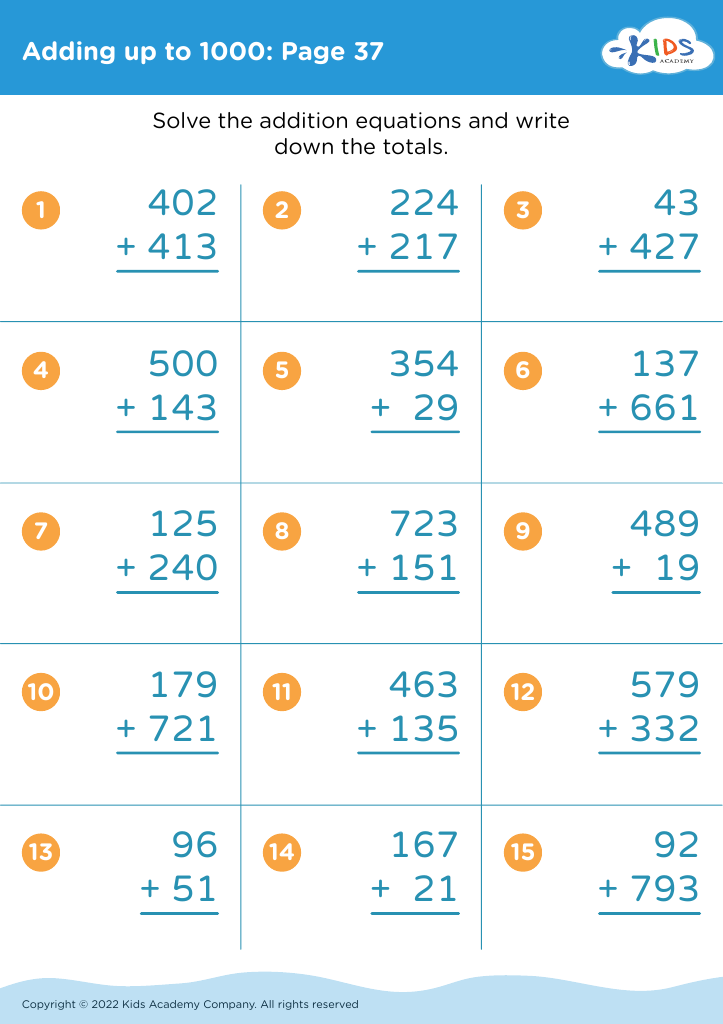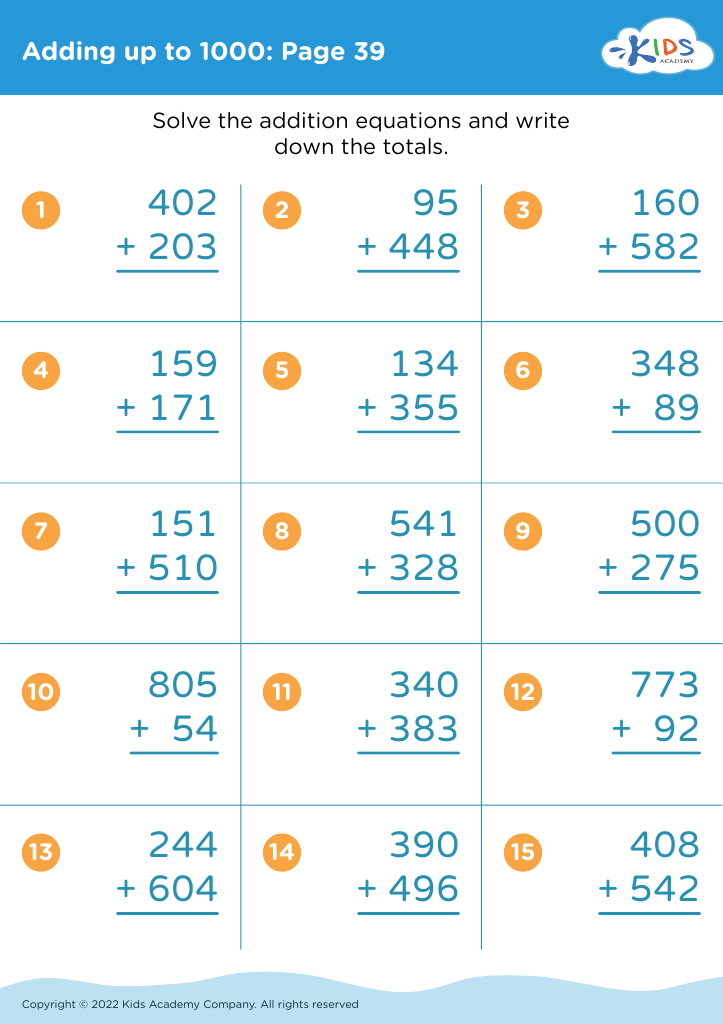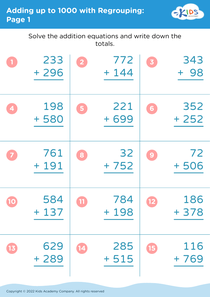Number Recognition Adding up to 1000 Misc Worksheets for Ages 7-8
13 filtered results
-
From - To
Discover our engaging "Number Recognition Adding Up to 1000" worksheets, specially designed for children aged 7-8! These comprehensive activities help young learners master their number recognition skills while building essential math foundations. Each worksheet features fun and interactive exercises that challenge students to identify, compare, and manipulate numbers up to 1000. Ideal for classroom use or home learning, our resources promote critical thinking and boost confidence in mathematics. With vibrant designs and varied formats, kids will enjoy practicing their number skills while preparing for more advanced mathematical concepts. Empower your child's learning journey today with our targeted and effective math worksheets!
Number recognition is a vital foundational skill in early mathematics education, particularly for children aged 7-8. At this age, students aren’t just expected to recognize numbers but also to understand their significance within a broader numerical context, such as adding up to 1000. Mastering number recognition lays the groundwork for basic arithmetic operations, enabling students to perform addition, subtraction, and even introduction to more complex operations.
For parents and teachers, fostering number recognition in this age group is crucial because it helps children develop confidence in their mathematical abilities. When children can recognize and internalize numbers as part of everyday life, they will be better prepared to connect mathematical concepts to real-world problems, such as budgeting and time management.
Additionally, understanding numbers aids in enhancing critical thinking and organizational skills, skills that are essential for academic success and future problem solving. Moreover, recognizing numbers supports overall literacy and cognitive development, promoting a holistic learning approach. By emphasizing number recognition, parents and teachers set students on a trajectory toward essential competencies that shape their educational journey and equip them with mathematical literacy for future challenges. This investment in their learning cultivates curiosity and encourages a positive attitude towards mathematics.
























